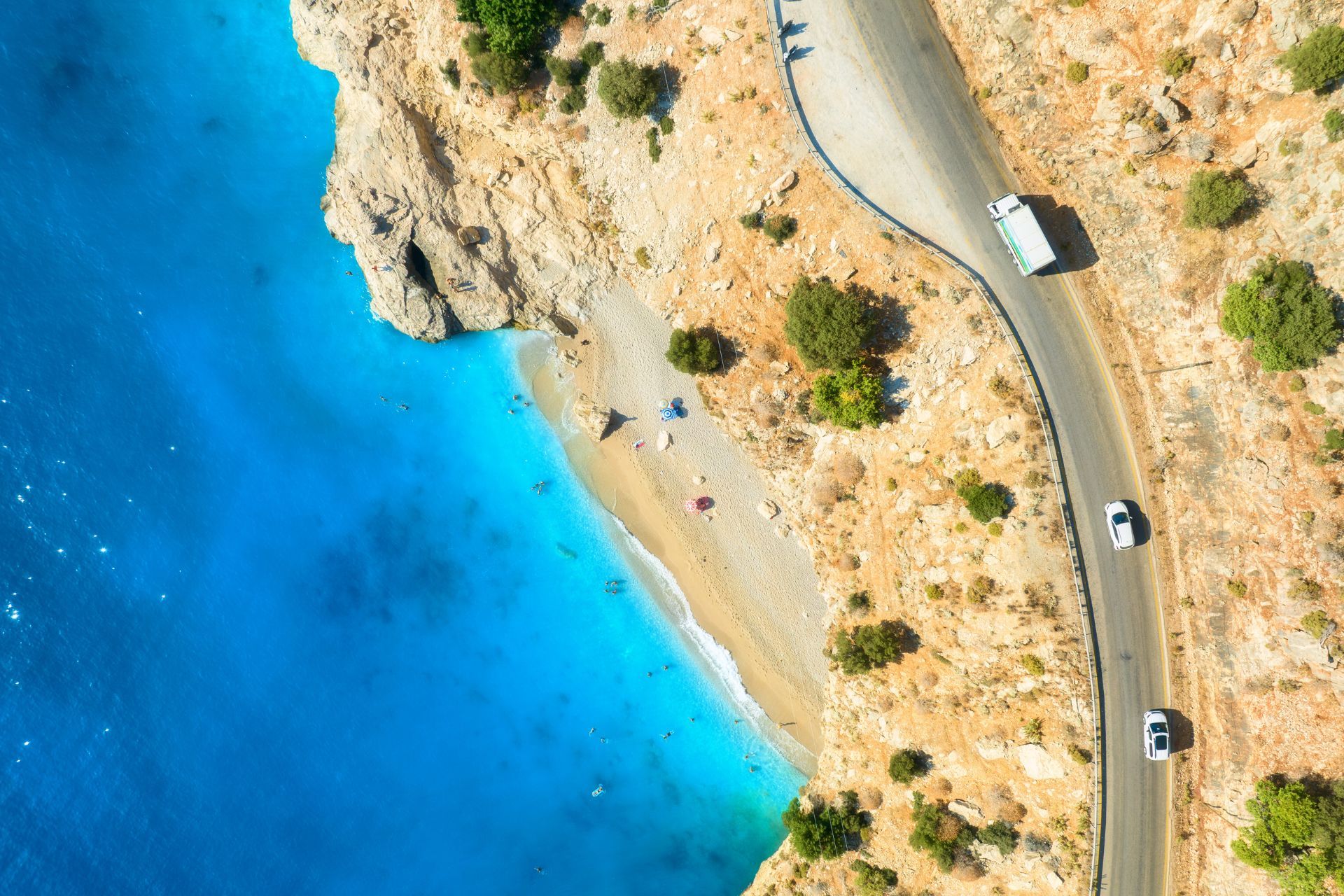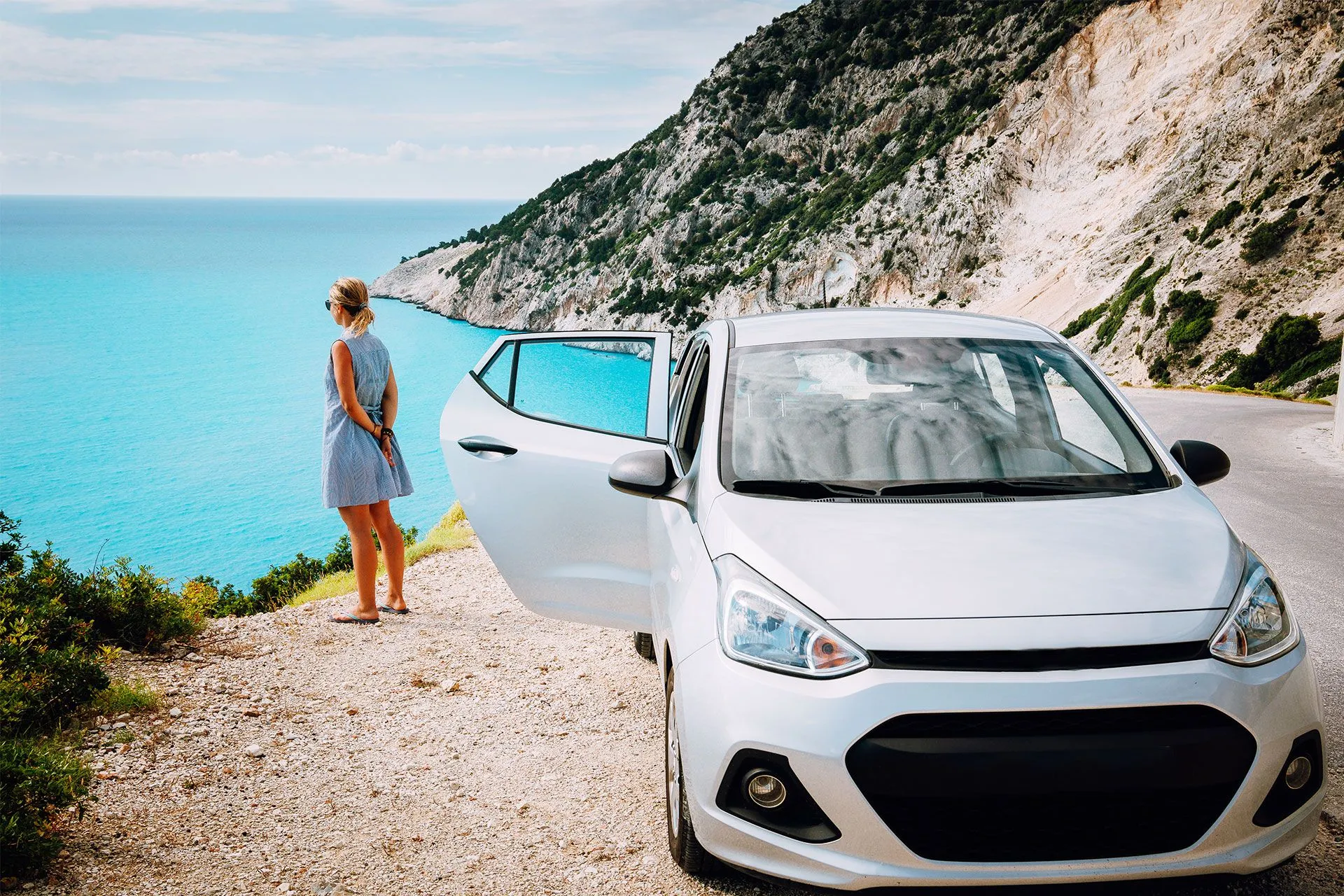
Driving in Greece: Everything you need to know
Greece is one of the most popular touristic destinations in Europe right now, with numerous points of interest and places you can visit. Islands, such as Crete, Rhodes and Corfu, as well as mainland destinations, such as Athens, Peloponnese and Thessaloniki, are best explored by car, as they offer many significant sites, beaches and cultural spots in various places.
Driving in Greece is easy and affordable, but you need to know some tips that can be very useful. Read further the ultimate guide for your road trips in Greece and organize the perfect journey in an amazing country!
In This Article
- Is driving in Greece left or right?
- What is the driving age in Greece for tourists?
- Drinking and driving laws in Greece
- Is driving in Greece difficult?
- Driving in major destinations in Greece
- Driving in Athens
- Driving in Mykonos
- Driving in Ikaria
- Driving in Crete
- Driving in Corfu
- Driving in Kos
- Driving in Zakynthos
- Driving in Thessaloniki
- Driving in Paros
- Driving in Naxos
Is driving in Greece left or right?
In Greece, drivers drive to the right side of the road, as in most European countries, following the continental system. Thus, the driver’s seat is on the left side of the car.
So, regarding the roundabouts for driving in Greece, you enter the square from the right, going counterclockwise.
What is the driving age in Greece for tourists?
The minimum age to drive in Greece is 18 years old, but if you want to rent a car, limits are stricter.
Typically, the minimum age for car rental in Greece is 25 years, but you can be as young as 23 years old if you pay an additional young driver fee. However, keep in mind that this is an option only for a few car groups. The maximum car rental age limit in Greece is 70 years, but you can be as old as 75 years old if you pay an additional senior driver fee.
Read more practical information for car hire in Greece.

Drinking and driving laws in Greece
What is the alcohol limit for driving in Greece?
In Greece, the alcohol limit for driving is 0.05% for private drivers. However, a lower limit of 0.02% applies to young drivers with less than two years of experience, motorcycle riders and professional drivers. For safety reasons and to avoid strict penalties, we recommend you avoid alcohol at all before, as driving drunk in Greece is dangerous and can lead to fines up to 2.000 euros or even up to six months in prison.
Other driving laws in Greece you should be aware of are:
- The use of seat belts is mandatory for all passengers, and children under 12 years old must use appropriate child seats.
- Speed limits are 50/70 km/h in urban areas, 90 km/h outside the city and 120/130 km/h on highways.
- The use of mobile phone is allowed only with handsfree devices.
Is driving in Greece difficult?
In most places, driving in Greece is easy. The road condition is generally good, the signs are in Greek as well as in English and major roads are well lit.
To go from one major city to the other, such as from Athens to Thessaloniki, Patras or Ioannina, there are modern highways. However, between smaller cities, there are rural roads, and on the islands or mountainous villages, roads have sharp turns, are not lit during night and require experience to drive on.
Thus, we recommend you considering the following tips for driving in Greece:
- Use headlights during the day in tunnels and on shaded roads to improve visibility. In mountainous areas, there may be fog, so alarm lights are crucial to use.
- Drive at a cautious speed in narrow roads on the islands.
- Don’t drive at night if you are not familiar with fog, steep roads and sharp turns, especially on the Greek islands.
- In major cities, avoid driving in rush hours, as traffic can be really heavy.
- Don’t drive large cars, such as family cars and big SUVs, in small islands, where the roads are very narrow.
Read additional travel tips for Greece.

Driving in major destinations in Greece
As the road network in various places in Greece vary depending on factors such as island/mainland, big city / small town etc, let’s see what means driving in the most popular touristic destinations in Greece.
Driving in Athens
Driving in Athens is challenging due to heavy traffic almost all day long, aggressive driving behavior from locals and limited parking, especially in the city center. It is advisable to avoid driving in central areas by parking your car at your hotel, as most sites in Athens downtown are better explored on foot. However, if you want to drive outside the city center, driving is easy if you avoid the rush hours (8:00-10:00 a.m. and 3:00 – 7:00 p.m.).
Driving in Mykonos
Mykonos has narrow roads with sharp turns, making driving difficult, particularly during peak tourist seasons. Parking in popular areas like Mykonos Town can be difficult, but there are public and private parking spots where you can park just a short walking distance away from the heart of Mykonos town. If you drive at night, be very cautious of drunk drivers.
Also read: Driving in Mykonos: Navigate the Island Like a Local
Driving in Ikaria
Ikaria's roads are often narrow and winding, with some unpaved sections, especially in mountainous areas. As driving on unpaved roads is prohibited with rental car, except for 4X4, it is recommended to check the route with GPS before deciding to go on a remote beach. Plus, signage is limited and on rural roads you should be very careful with pedestrians and livestock.
Also read: Driving in Ikaria: Discover the Secrets of This Amazing Island

Driving in Crete
Crete offers a mix of modern highways and rural roads. While main roads are generally in good condition, some rural areas have narrow roads. Be prepared for aggressive driving behavior as well as drunk drivers even during the day. We recommend you adhere strictly to speed limits and allow faster vehicles to pass by moving to the right side of the road.
Read also: Driving in Crete: Enjoy the Fun Roads and Beaches
Driving in Corfu
Corfu's roads vary from well-maintained highways to narrow, winding local roads, so be prepared for sharp turns and limited visibility in some areas. During the peak season, driving in and around Corfu Town may be difficult due to heavy traffic. As parking is limited there, we recommend you park outside the Old Town and go on foot.
Also read: Driving in Corfu: Easy Tips for Exploring the Island
Driving in Kos
Kos has a relatively straightforward road network, making it accessible for all drivers, even inexperienced ones. Main roads are in good condition, but some rural areas may have narrower paths. Moreover, you should be cautious when driving at night due to limited street lighting in some areas.

Driving in Zakynthos
Zakynthos features a mix of coastal and mountainous roads. While many roads are paved and in good condition, some areas, especially in the north, have narrow and winding roads. As driving to unfamiliar roads may be challenging for most travelers, remember that there is also the option to take the tourist boats from Zakynthos town to explore remote beaches, such as the Shipwreck.
Driving in Thessaloniki
Driving in Thessaloniki has the same challenges as Athens, namely heavy traffic and limited parking. Driving requires patience and attention to local driving habits. Consider going on foot in the city center and drive only to make remote routes, such as to nearby beaches and Chalkidiki. Other interesting road trips you can make from Thessaloniki are to Kavala, Xanthi, Naoussa, Edessa and Veroia.
Driving in Paros
Paros offers a relaxed driving experience with a network of well-maintained roads connecting villages and beaches. During peak tourist seasons, traffic increases, and parking in popular areas may become limited. However, the road to all well-known beaches as well as from Naoussa and Paroikia to local villages are in good condition.
Driving in Naxos
Main roads in Naxos are generally in good condition, but some rural areas have narrow and winding routes. Some areas in Naxos, such as the village of Apiranthos, are mountainous, so be prepared for fog and mixed weather conditions even during summer. In Naxos town, traffic is heavy in July and August, but there are many free parking spots, just outside the city.
Organize now your trip and rent a car in Greece with Abbycar for the lowest prices and most competitive all-inclusive packages!



